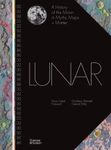![Remote Sensing of Forest Environments Remote Sensing of Forest Environments]()
Click to have a closer look
About this book
Contents
Customer reviews
Related titles
About this book
The book provides readers with a state-of-the-art synopsis of the current methods and applied applications employed in remote sensing of the world's forests. This book introduces a series of case studies that exemplify the ways in which remotely sensed data are operationally used, as an element of the decision-making process, and in the scientific study of forests.
Contents
Dedication. Editor Profiles. Preface. Acknowledgements. Section 1: Data collection and pre-processing. 1. Remote sensing of forest environments, Introduction. The transition from theory to information; M.A. Wulder, S.E. Franklin. 2. Selection of remotely sensed data; M.A. Levsky, W.B. Cohen. 3. The roles of arial photography in forestry remote sensing image analysis; R.J. Hall. 4. Indirect measurement of forest canopy structure from in situ optical sensors; R.A. Fournier, et al. 5. Accuracy assessment of maps of forest condition: Statistical design and methodological considerations; R.L. Czaplewski. Section 2: Common methods for data processing and information generation. 6. Geometric correction of remotely sensed images; T. Toutin. 7. Radiometric image processing; D.R. Peddle, et al. 8. Per-pixel analysis of forest structure: Vegetation indices, spectral mixture analysis and canopy reflectance modeling; G.P. Asner, et al. 9. Extracting individual tree information: A survey of techniques for high spatial resolution imagery; D.S. Culvenor. 10. Rationale and conceptual framework for classification approaches to assess forest resources and properties; J. Franklin, et al. 11. Remote sensing of forests over time: Change types, methods, and opportunities; Peng Gong, Bing Xu. Section 3: Case studies illustrating methods and applications for remote sensing of forests. 12. National scale forest information extraction from coarse resolution satellite data, Part 1. Data processing and mapping land cover types; J. Cihlar, et al. 13. National scale forest information extraction from coarse resolution satellite data, Part 2. Forest biophysical parameters and carbon; J. Cihlar, et al. 14. Regional forest land cover characterisation using medium spatial resolution satellite data; Chenquan Huang, et al. 15. Modeling forest productivity using data acquired through remote sensing; N.C. Coops, J.D. White. 16. Experiences in field data collection: In support of land use and land cover change classification in boreal and tropical environments; G.A. Sanchez-Azofeifa, et al. 17. Estimation of foliar chemistry of western hemlock using hyperspectral data; K.O. Niemann, D.G. Goodenough. 18. Using georeferenced large-scale aerial videography as a surrogate for ground validation data; D. Slaymaker. 19. Tree and canopy height estimation with scanning lidar; B. St-Onge, et al. 20. Remote sensing of forest environments, conclusions, challenges and opportunities; S.E. Franklin, M.A. Wulder. Index.
Customer Reviews


































